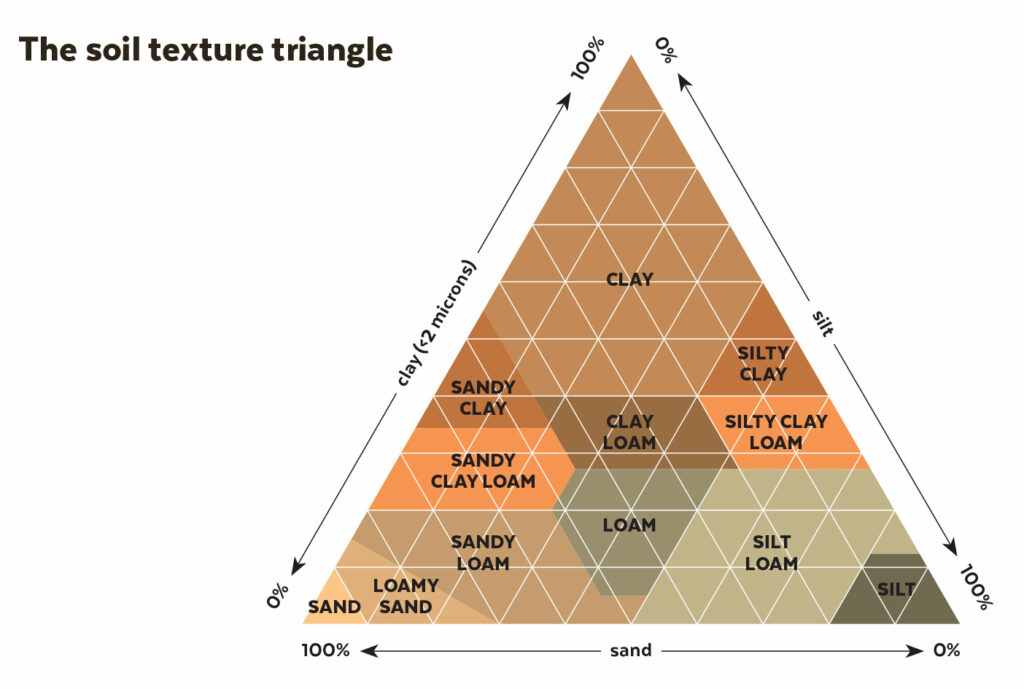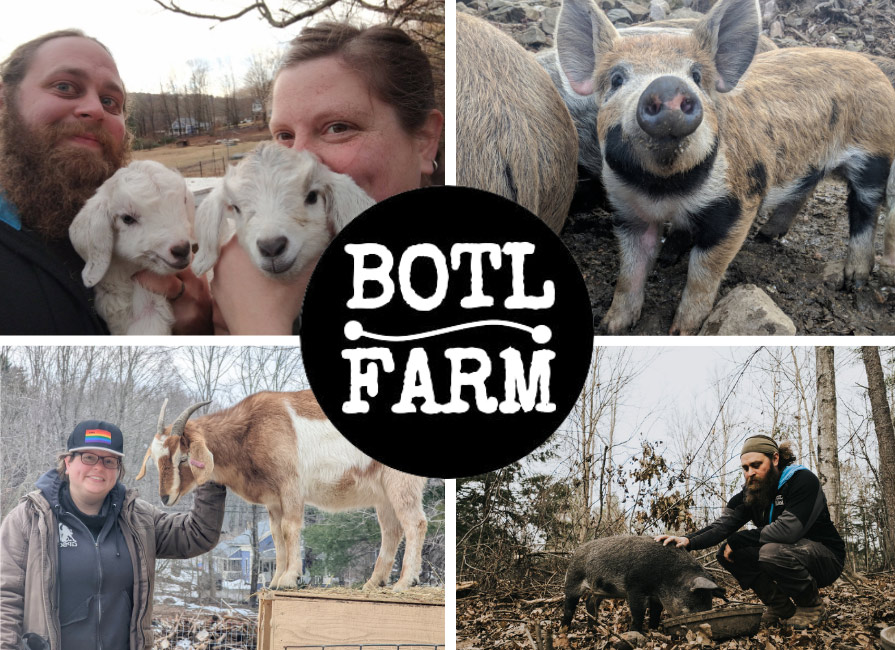Market research shows that today’s consumers are increasingly interested in knowing where their food comes…

Start with The Soil
Soil nutrient management is a vital part of regenerative farming and applying climate-smart practices can reduce the environmental impact of your operation while improving its resilience—and profitability.
The ‘four rights’
Knowing the basic nutrient profiles of available fertilizers, composts, and manures is fundamental when planning soil improvement. However, employing appropriate application methods is equally important in preventing unintended environmental damage.
To put this into context, while the application of nitrogen-rich poultry manure may be a great addition to deficient soil, applying it on sloped ground two days before forecast rain is neither climate-smart, nutrient-smart or financially smart, as the risk for runoff pollution is quite high.
The Natural Resource Conservation Service (NRCS) defines nutrient management (code 590) as a climate-smart practice that requires farmers to, “Manage rate, source, placement, and timing of plant nutrients and soil amendments while reducing environmental impacts.” This can be summarized as the ‘Four Rights of Nutrient Management’ or 4Rs:
- Right nutrient sources
- Right rate
- Right time
- Right place
As you begin to build your management plan, remember that strict adherence to the 4Rs will not only help you manage and improve your soils, but can protect you from potentially disastrous unintended consequences of poor decisions.
Right nutrient sources
The application of natural manure fertilizers, composts and soil conditioners is a common nutrient management strategy and can have a huge impact on soil fertility—as well as the bottom line. However, some materials are more useful as soil amendments rather than fertility builders.
For example, it’s very important to assess and evaluate any bought-in compost before application. While it can help add organic matter to the soil, poorly made compost can contain material treated with harsh agrochemicals that can have an impact on crop or grass growth, while the unbalanced addition of high-carbon ingredients like woodchips and straw can actually ‘lock up’ nitrogen in the soil.
Similarly, while farmyard manure is a valuable and cost-effective material, keep in mind that manure nutrient profiles can vary significantly, so nutrient testing is recommended. If you are unable to test, however, you’ll easily find estimated nutrient values for animal-derived manures online that provide a general idea of nutrient availability.
Of course, animals will also apply manure (and urine) to the land as they graze, and you can easily find manure management figures (based on animal species, age, and size) online and in books to help determine the volume of manure produced when prescribed grazing is employed. For many AGW-certified farmers, utilizing prescribed grazing is a favored climate-smart practice that increases availability of soil nutrients, maintains living roots (which help to stabilize soil health and structure), sequesters carbon and more. Living roots can also be encouraged through additional climate-smart practices such as planting cover crops like clover, vetch, peas and beans, which supply added benefits of increased soil fertility and reduction of erosion risk, as well as increased farmland biodiversity.
Ensuring plant diversity in cover crops and through crop rotations can help to improve soil structure and soil biological activity, as well as stabilizing soil. No-till and low-till farming systems can also help to reduce erosion risk and encourage living roots.
Right rate
Balancing soil nutrient availability and crop nutrient demand can often feel like a game of chess, but this is where the baseline soil scorecard should come into play. Cross checking crop yields against input rates will help to determine if your nutrient management plan is on track. Annual soil testing can also provide a broad picture of improvement (or otherwise) over time. And with rising costs of fertility builders, these cross-checks will also identify if you’re getting the most bang for your buck.
Nevertheless, while nutrient management plans often focus on the addition of soil nutrients and other inputs, it’s important to pay close attention to what is being removed from the soil, either by cropping or grazing. Naturally, productivity shifts when land becomes tired and exploited to the point of depletion, so it’s especially important to ensure soils are bolstered appropriately. Prescribed grazing is a profitable fertility building practice, for example, but can also lead to issues such as soil compaction, overgrazing and excessive application of nutrients if not timed and managed properly.
Right time
Correct timing can be the determining factor between a bumper crop and flushing your money down the drain (not to mention polluting the wider environment). Planning fertilizer application will typically depend on factors like crop demand (which is usually near planting season) or seasonality (such as time of year and forecasted weather events). Other factors such as odor can also play a role in deciding the appropriate application time.
In some regions, early fertilizer application can be beneficial, while other areas where soils are still cold and/or saturated from spring rain will result in poor nutrient retention and runoff.
Note: Certified Regenerative by AGW farms must identify pollution risks, such as the potential for runoff, and have mitigation plans in place as part of their annual audit.
Right place
Targeted application of soil inputs can also mean the difference between success and failure. Slope, soil characteristics, and nearness to root zones are crucial components to consider when determining location and positioning of fertility treatments. It is essential to consider proximity to rivers, creeks, ponds, and other watercourses (and post-application weather conditions) before any application to avoid runoff risk. If you notice an abundance of nitrogen-loving plants at the base of your slopes, it’s worth undertaking a risk assessment to ensure that manure is being effectively managed to prevent runoff and reduce nutrient loss.
The appropriate storage of your chosen inputs is also essential to ensure nutrients aren’t wasted, as well as to minimize pollution risks. Ideally, store manure under cover and at an appropriate distance from waterways to prevent leaching and contaminating nearby land and watercourses.

Establishing your baseline
Developing a nutrient management plan can feel daunting, but getting started doesn’t have to be complicated. A great way to establish the foundation of your plan is to identify your baseline soil metrics through testing, and then incorporate this information with the known history of the land.
Though opinions on ideal testing methodologies differ, a quick web search will provide many basic DIY and professional laboratory options for the evaluation of soil pH, macronutrients (nitrogen, phosphorus, potassium, magnesium, calcium and sulfur), micronutrients (boron, chloride, copper, iron, molybdenum, manganese, zinc and nickel), soil carbon, and much more.
In addition to exploring chemical characteristics, it’s well worth considering the biological and physical characteristics of your soil to build the bigger picture. If you are unsure of your soil type(s), for example, simple tools like the Soil Texture Triangle (above) can help you to identify and understand what percentages of sand, silt and clay contribute to your soil classification.
Many biological tests are also available and range from simple earthworm counts to laboratory microbiological assessments and soil organic matter (SOM). With a little elbow grease, a spade shovel, and a few household implements, it’s easy to assess the physical characteristics of your soil, such as soil structure and soil compaction, or to undertake a ‘slake test’ for soil stability, or an infiltration test to estimate the rate at which runoff will infiltrate, or pass through, soil.
By combining these chemical, physical and biological metrics, you can create a baseline soil scorecard that can serve as a launchpad for your nutrient management plan. Just don’t forget to accurately mark and map your testing locations so you can return to exactly the same spot to monitor improvements.
Resources
The Certified Regenerative by AGW standards contain multiple annexes with useful reference materials to help guide your evaluation endeavors. For example, ‘Annex B Assessment, Monitoring & Testing Methods’ is a great resource for developing baseline metrics for your nutrient management plan, providing extensive (but not exhaustive) lists and links to testing information. Certified Regenerative by AGW standards are available online for review.
For more information about certification resources, requirements, and grant opportunities to implement nutrient management planning or prescribed grazing, get in touch at 1-800-373-8806 and info@agreenerworld.org
Author: Caitlin Aguilar is AGW’s Director of Quality
Originally published in the Spring 2024 issue of AGW’s Sustainable Farming magazine.



